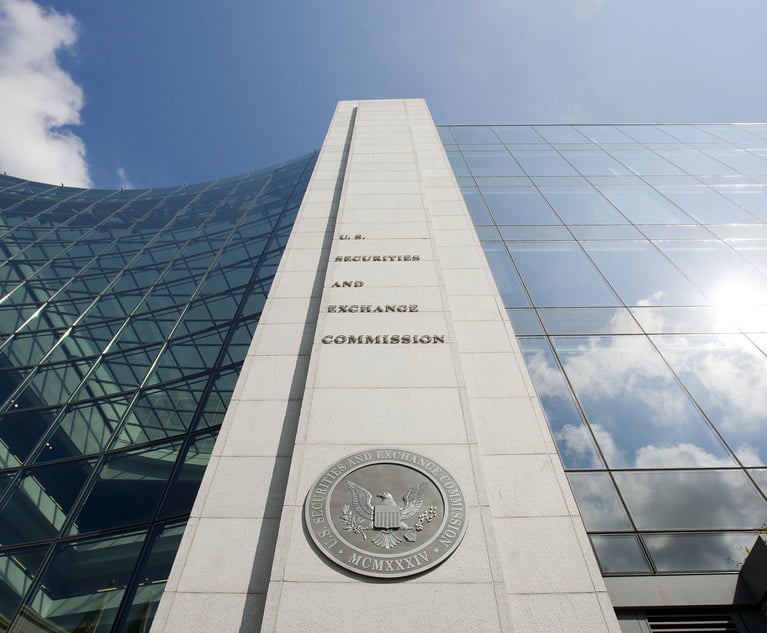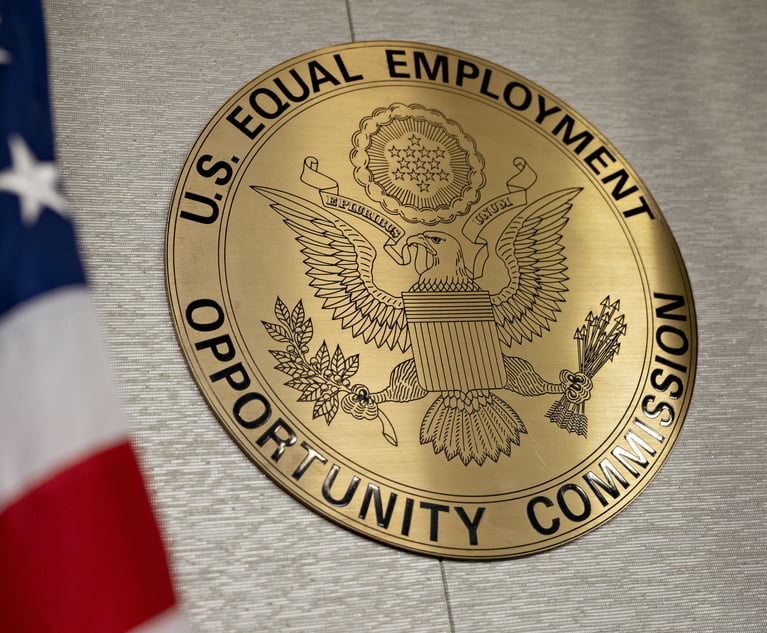Litigation: When does a company have a duty to preserve evidence?
There is no consensus among state or federal courts on the standards that govern preservation and spoliation issues.
May 09, 2013 at 10:49 AM
3 minute read
The original version of this story was published on Law.com
There is no consensus among state or federal courts on the standards that govern preservation and spoliation issues. Yet, whether and when a company has a duty to preserve evidence is among the first questions that come to mind for inside counsel considering spoliation issues. Generally, a company has no duty to preserve evidence before litigation is filed, threatened or reasonably foreseeable unless there is a statutory or regulatory mandate, a contractual obligation, some special circumstance, or an organization has voluntarily assumed an obligation to retain some document, data or thing. That means, unless a company has notice of a probable or pending litigation or a government investigation, it generally has the right to dispose of its own property, including documents, electronically stored information or tangible things, without liability.
So, when does a company have a duty to preserve documents, data or things that may be relevant to a government investigation or a lawsuit? There are several subtle variations in standards for establishing when a pre-litigation duty to preserve evidence may be triggered. In large part because plaintiffs control when litigation is commenced, a plaintiff's duty to preserve is often triggered before litigation is commenced. However, it does not matter if a company initiates or is the target of litigation; most courts find that the common law duty to preserve evidence arises the moment litigation is “reasonably anticipated.” (e.g., Micron Tech., Inc. v. Rambus Inc.)
Some courts find that a duty to preserve evidence is triggered for potential litigation if a reasonable person in the party's position should have foreseen that specific documents, data or things were material to a lawsuit. Other courts have held that a duty to preserve such evidence arises once a party knows that information may be relevant to a reasonably foreseeable claim. For instance, in the oft-cited Zubalake decision, the court found that a company employer had a duty to preserve electronic records destroyed before an employee filed the charge of discrimination that triggered a government investigation because almost everyone with whom that employee worked anticipated she might bring a lawsuit. That is, the court held that duty to preserve attached at the time that litigation was “reasonably anticipated,” and that key company employees anticipated litigation months before the employee filed a charge of discrimination. Still other courts look at whether a party has some notice that the data, documents or things are relevant to litigation, or that the party should have known that the data, documents, or things may be relevant to some future litigation.
One circuit court suggested that a party has a duty to preserve evidence only if it knew, or should have known, “that litigation was imminent.” Burlington Northern & Santa Fe Ry. v. Grant. But the Federal Circuit in Micron Tech., Inc. rejected this standard, refusing to “sully the flexible reasonably foreseeable standard with [a] restrictive gloss” that would require a showing that a person reasonably foresee that “litigation was imminent.” Rather, the court found that the “reasonably foreseeable” standard is sufficiently flexible and fact-specific to allow a court to exercise the discretion necessary to consider the many factual situations inherent in a spoliation inquiry. The trick is to determine what facts the court will consider when determining that litigation was reasonably foreseeable or reasonably anticipated; a topic we will address next.
This content has been archived. It is available through our partners, LexisNexis® and Bloomberg Law.
To view this content, please continue to their sites.
Not a Lexis Subscriber?
Subscribe Now
Not a Bloomberg Law Subscriber?
Subscribe Now
NOT FOR REPRINT
© 2025 ALM Global, LLC, All Rights Reserved. Request academic re-use from www.copyright.com. All other uses, submit a request to [email protected]. For more information visit Asset & Logo Licensing.
You Might Like
View All

Trending Stories
- 1Uber Files RICO Suit Against Plaintiff-Side Firms Alleging Fraudulent Injury Claims
- 2The Law Firm Disrupted: Scrutinizing the Elephant More Than the Mouse
- 3Inherent Diminished Value Damages Unavailable to 3rd-Party Claimants, Court Says
- 4Pa. Defense Firm Sued by Client Over Ex-Eagles Player's $43.5M Med Mal Win
- 5Losses Mount at Morris Manning, but Departing Ex-Chair Stays Bullish About His Old Firm's Future
Who Got The Work
J. Brugh Lower of Gibbons has entered an appearance for industrial equipment supplier Devco Corporation in a pending trademark infringement lawsuit. The suit, accusing the defendant of selling knock-off Graco products, was filed Dec. 18 in New Jersey District Court by Rivkin Radler on behalf of Graco Inc. and Graco Minnesota. The case, assigned to U.S. District Judge Zahid N. Quraishi, is 3:24-cv-11294, Graco Inc. et al v. Devco Corporation.
Who Got The Work
Rebecca Maller-Stein and Kent A. Yalowitz of Arnold & Porter Kaye Scholer have entered their appearances for Hanaco Venture Capital and its executives, Lior Prosor and David Frankel, in a pending securities lawsuit. The action, filed on Dec. 24 in New York Southern District Court by Zell, Aron & Co. on behalf of Goldeneye Advisors, accuses the defendants of negligently and fraudulently managing the plaintiff's $1 million investment. The case, assigned to U.S. District Judge Vernon S. Broderick, is 1:24-cv-09918, Goldeneye Advisors, LLC v. Hanaco Venture Capital, Ltd. et al.
Who Got The Work
Attorneys from A&O Shearman has stepped in as defense counsel for Toronto-Dominion Bank and other defendants in a pending securities class action. The suit, filed Dec. 11 in New York Southern District Court by Bleichmar Fonti & Auld, accuses the defendants of concealing the bank's 'pervasive' deficiencies in regards to its compliance with the Bank Secrecy Act and the quality of its anti-money laundering controls. The case, assigned to U.S. District Judge Arun Subramanian, is 1:24-cv-09445, Gonzalez v. The Toronto-Dominion Bank et al.
Who Got The Work
Crown Castle International, a Pennsylvania company providing shared communications infrastructure, has turned to Luke D. Wolf of Gordon Rees Scully Mansukhani to fend off a pending breach-of-contract lawsuit. The court action, filed Nov. 25 in Michigan Eastern District Court by Hooper Hathaway PC on behalf of The Town Residences LLC, accuses Crown Castle of failing to transfer approximately $30,000 in utility payments from T-Mobile in breach of a roof-top lease and assignment agreement. The case, assigned to U.S. District Judge Susan K. Declercq, is 2:24-cv-13131, The Town Residences LLC v. T-Mobile US, Inc. et al.
Who Got The Work
Wilfred P. Coronato and Daniel M. Schwartz of McCarter & English have stepped in as defense counsel to Electrolux Home Products Inc. in a pending product liability lawsuit. The court action, filed Nov. 26 in New York Eastern District Court by Poulos Lopiccolo PC and Nagel Rice LLP on behalf of David Stern, alleges that the defendant's refrigerators’ drawers and shelving repeatedly break and fall apart within months after purchase. The case, assigned to U.S. District Judge Joan M. Azrack, is 2:24-cv-08204, Stern v. Electrolux Home Products, Inc.
Featured Firms
Law Offices of Gary Martin Hays & Associates, P.C.
(470) 294-1674
Law Offices of Mark E. Salomone
(857) 444-6468
Smith & Hassler
(713) 739-1250







